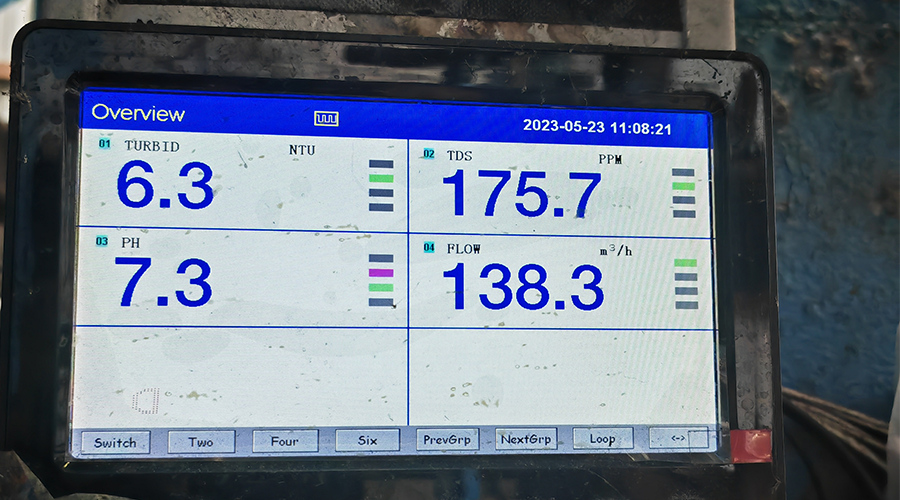The measurement and monitoring of pH levels play a crucial role in various industries, including water treatment, pharmaceuticals, food and beverage production, and many others. pH detectors are used to accurately determine the acidity or alkalinity of a solution. One of the key components of a pH detector is the electrode, which is responsible for sensing and transmitting the pH signal. In this article, we will discuss the process of configuring the electrode of an online pH detector to ensure accurate and reliable measurements.
Understanding pH Detectors
What is a pH Detector?
A pH detector is an analytical instrument used to measure the concentration of hydrogen ions (pH) in a liquid. It consists of a pH electrode, a reference electrode, and a pH meter or controller. The pH electrode is the primary component responsible for detecting the pH value.
Importance of Electrodes in pH Detectors
The electrode is the heart of a pH detector as it directly interacts with the solution being tested. It converts the chemical reaction between the sample and the electrode into an electrical signal that can be measured and interpreted by the pH meter or controller. Therefore, proper configuration and maintenance of the electrode are crucial for accurate pH measurements.
Common Types of pH Electrodes
There are several types of pH electrodes available, each with its own advantages and limitations. The most common types include:
Glass Electrode: This is the most widely used type of pH electrode. It consists of a glass membrane that responds to changes in pH by generating a voltage signal.
Solid-state Electrode: These electrodes are made of a solid-state sensor material and do not require a liquid-filled reference electrode. They are known for their durability and resistance to contamination.
Combination Electrode: This type of electrode combines the pH sensor and reference electrode into a single unit. It simplifies the installation process and is commonly used in online pH detectors.
Configuring the Electrode of an Online pH Detector
Configuring the electrode of an online pH detector involves several important steps. Let’s explore them in detail:
Preparing the Electrode for Use
Before configuring the electrode, it’s crucial to prepare it for use. Start by carefully removing the electrode from its storage solution or packaging. Rinse it with deionized water to remove any impurities or contaminants. Be gentle during this process to avoid damaging the sensitive electrode components.
Calibrating the Electrode
Calibration is a critical step to ensure accurate pH measurements. Follow the manufacturer’s instructions to calibrate the electrode using standard pH buffer solutions. Typically, a two-point calibration is performed using pH 4 and pH 7 buffers, or pH 7 and pH 10 buffers, depending on the application. Make sure to rinse the electrode with deionized water between each calibration point.
Installing the Electrode in the pH Detector System
After calibration, carefully install the electrode in the pH detector system according to the manufacturer’s guidelines. Ensure proper alignment and make sure the electrode is securely attached to prevent any leaks or damage during operation. Double-check all the connections to ensure a stable and reliable connection.
Setting Up the pH Detector Parameters
Once the electrode is installed, it’s time to set up the pH detector parameters. Access the pH meter or controller‘s interface and enter the necessary configuration settings. This includes selecting the appropriate electrode type, temperature compensation settings, measurement units, and any specific parameters relevant to your application.
Testing and Fine-Tuning the Configuration
After the initial setup, it’s essential to test the configuration and fine-tune it if required. Prepare a sample with a known pH value and compare the reading on the pH meter or controller with the expected value. If there are any discrepancies, refer to the manufacturer’s troubleshooting guide or consult with technical support to make the necessary adjustments.
Maintenance and Troubleshooting
Proper maintenance and regular troubleshooting are vital for prolonging the lifespan of the electrode and ensuring accurate measurements. Here are some key maintenance and troubleshooting practices:
Cleaning and Storage of pH Electrodes
Clean the electrode after each use to remove any residual substances that may affect its performance. Gently rinse it with deionized water and use a soft brush if necessary. Avoid using harsh chemicals or abrasive materials. After cleaning, store the electrode in a storage solution recommended by the manufacturer to keep it hydrated and maintain its sensitivity.
Regular Calibration and Verification
Regular calibration is essential to maintain accurate pH measurements. Follow a calibration schedule recommended by the manufacturer, which typically ranges from weekly to monthly calibration depending on the application and usage frequency. Additionally, perform periodic verification tests using known pH buffer solutions to ensure the electrode is still providing reliable readings.
Troubleshooting Common Issues
If you encounter any issues with the electrode or pH measurements, refer to the troubleshooting guide provided by the manufacturer. Common issues may include unstable readings, slow response times, or drift in measurements. Follow the recommended steps to identify and resolve the problem. If necessary, contact the manufacturer’s technical support for further assistance.
Best Practices for Electrode Configuration
To optimize the configuration and performance of the electrode, it’s essential to follow these best practices:
Using the Right Electrode for the Application
Different applications may require specific electrode types or materials. Consider factors such as temperature, sample composition, and operating conditions when selecting an electrode. Consult with the manufacturer or an expert to ensure you choose the most suitable electrode for your application.
Proper Installation Techniques
Accurate measurements heavily depend on proper electrode installation. Follow the manufacturer’s guidelines carefully, ensuring a secure and leak-free connection. Improper installation can lead to inaccurate readings and potential damage to the electrode.
Regular Maintenance Schedule
Establish a regular maintenance schedule to clean, calibrate, and verify the electrode. Adhering to a maintenance routine ensures optimal performance and extends the electrode’s lifespan.
Conclusion
Configuring the electrode of an online pH detector is a crucial step in obtaining accurate and reliable pH measurements. By following the proper procedures for preparing, calibrating, installing, and fine-tuning the electrode, you can ensure optimal performance and precise pH readings. Regular maintenance and troubleshooting practices further enhance the electrode’s longevity and accuracy, contributing to efficient pH monitoring in various industries.
FAQs
1. How often should pH electrodes be calibrated?
pH electrodes should be calibrated regularly, with the frequency depending on the specific application and usage. In most cases, weekly or monthly calibration is recommended to maintain accurate measurements.
2. Can I reuse a pH electrode after calibration?
Yes, pH electrodes can be reused after calibration. However, it’s essential to follow proper cleaning and storage procedures to prevent contamination or damage.
3. What are the signs of a faulty pH electrode?
Signs of a faulty pH electrode may include unstable readings, slow response times, drift in measurements, or consistent inaccuracies compared to known pH buffer solutions.
4. Can I use any electrode with an online pH detector?
No, not all electrodes are compatible with every pH detector. It’s crucial to select an electrode recommended by the pH detector manufacturer and suitable for the specific application.
5. How do I know if my pH electrode is working correctly?
To ensure your pH electrode is working correctly, regularly calibrate and verify it using known pH buffer solutions. Compare the readings to the expected values to confirm accuracy. If discrepancies persist, consult the manufacturer or technical support for further guidance.
Post time: May-23-2023

